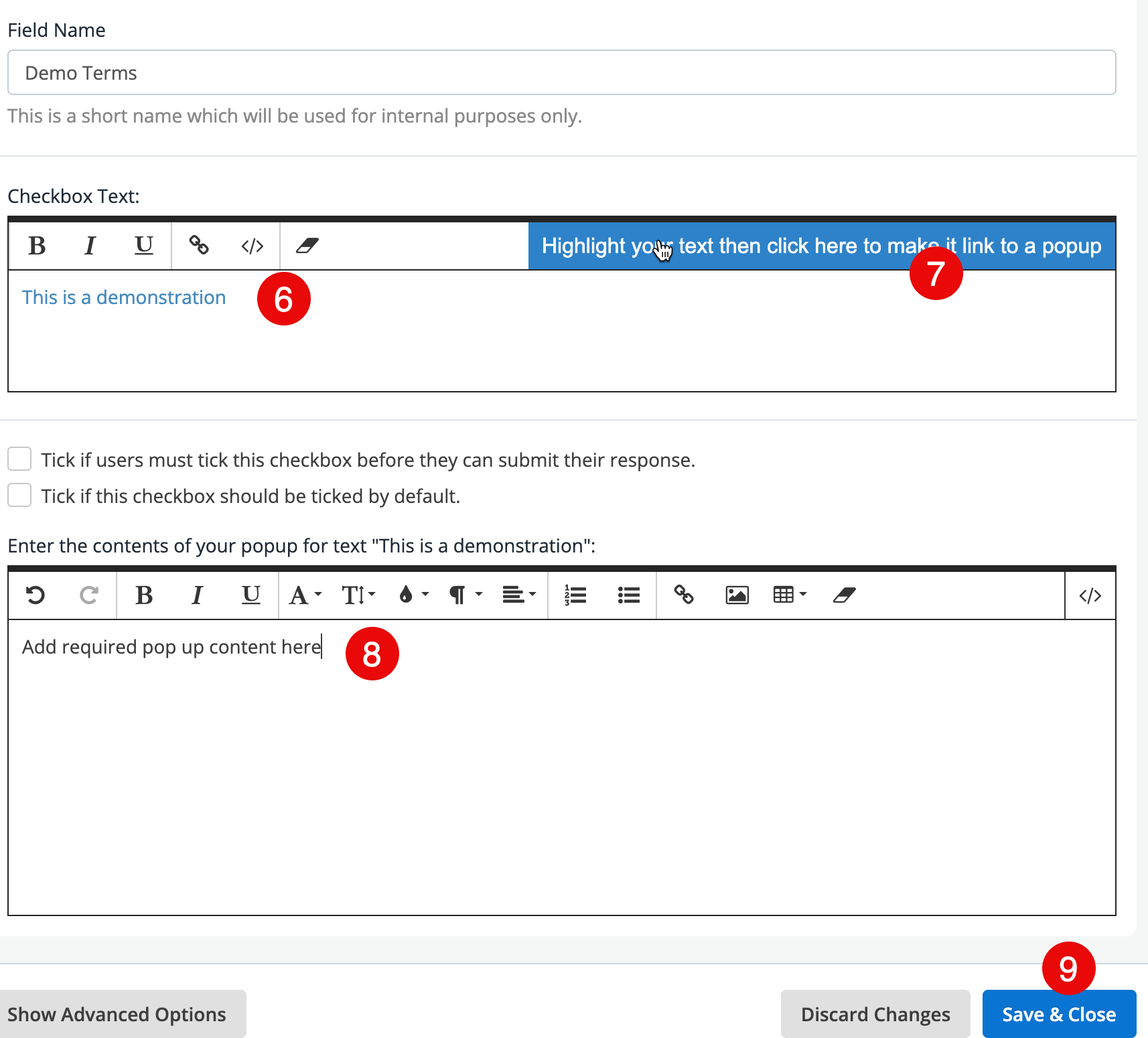Single checkbox
A Single Checkbox indicates agreement to terms and conditions, confirmation, or opt in.
Basic setup
-
In the Form Fields panel (left-hand side), drag the Checkbox field onto your form.
-
Type a field name (for internal purposes).
-
Type the checkbox text that will appear next to the checkbox.
-
(Optional) Select if users must tick this checkbox before they can submit their response.
-
Click Save & Close.

| If you want to use the checkbox in an opt-out scenario, click Tick if this checkbox should be selected by default. |
Show details in a dialog window
You can show the details of the agreement (things like terms and conditions or a privacy policy) in a dialog window that users can see through a link in the checkbox text.
-
Select your checkbox text.
-
Click Highlight your text, then click here to make it link to a popup.
-
Type the contents of the dialog window (for example, the terms and conditions) and format using the rich-text editor.
-
Click Save & Close.

Show advanced options
Click the Show Advanced Options button to reveal additional controls and capabilities, as the following table explains.
| Option | Description |
|---|---|
Assign numeric values for your options |
Assign values to options to automate calculations within a form. Read the Calculation section for more information. |
Read-only - do not allow entry into this field |
Lock a field to prevent form users from modifying a pre-defined field value. For example, you may have a default answer such as 'today’s date' or 'customer ID' that is pre-filled on the form and you do not want form users to change it. |
Hidden - do not show this field on the online form |
Hide a field to prevent form users from modifying a pre-defined field value. For example, you may have a default answer such as 'today’s date' or 'customer ID' that is pre-filled on the form and you do not want form users to see it. . Hide this field until certain conditions or responses in other fields are met. + For more information, see Conditional logic section. |